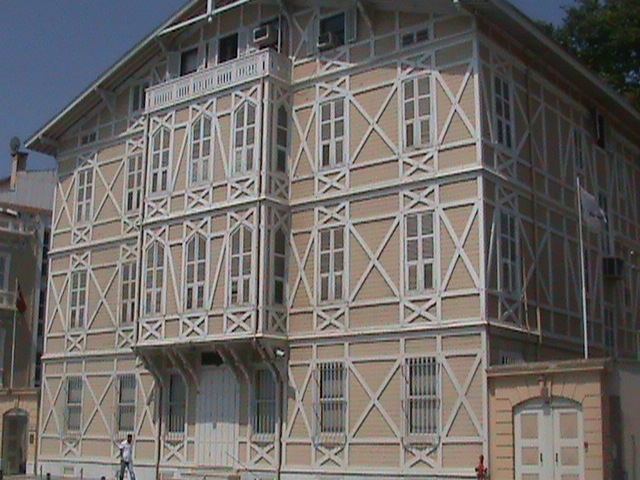Established October 14, 1980 Founded 14 October 1980 | Phone +90 212 242 38 13 | |
 | ||
Website www.sadberkhanimmuzesi.org.tr Address Büyükdere Piyasa Cad. No: 27- 29, 34453, Turkey Hours Closed now Monday10AM–5PMTuesday10AM–5PMWednesdayClosedThursday10AM–5PMFriday10AM–5PMSaturday10AM–5PMSunday10AM–5PMSuggest an edit Similar Sakıp Sabancı Museum, Rahmi M Koç Museum, Turkish and Islamic Arts Muse, Great Palace Mosaic M, Pera Museum Profiles | ||
Sadberk han m m zesi
The Sadberk Hanım Museum (Turkish: Sadberk Hanım Müzesi) is a private museum located at the Bosporus in Büyükdere quarter of Sarıyer district in Istanbul, Turkey, which was established by the Vehbi Koç Foundation in memory of Vehbi Koç’s deceased wife Sadberk. The museum is open every day except Wednesdays.
Contents
Buildings
The museum occupies two separate buildings of charming 19th century wooden villas. The original building is a three-story plus an attic wooden mansion and whose architecture was inspired by European vernacular traditions. The building, constructed of wood and lathe-and-plaster on a masonry foundation, was known as the "Azeryan Yalısı".
The building was purchased by the Koç family in 1950, and was used by them as a summerhouse until the decision to convert it into a museum was taken in 1978. The conversion into a museum was carried out between 1978 and 1980 according to a restoration project that had been prepared by Sedat Hakkı Eldem. It opened its doors to the public on October 14, 1980 with the Sadberk Koç collection on display.
The Azeryan Yalı occupies 400 m2 (4,300 sq ft) of space set in grounds measuring a total of 4,280 m2 (46,100 sq ft) in all. On the ground floor is a gift shop and a small tea room. The ceiling over the main entrance, which is no longer used, is decorated with plaster moldings inspired by ancient Roman architecture. Wooden stairways lead to the upper floors. The walls are painted so as to resemble veined marble. The centrally located main halls of the second and third floors and the rooms opening onto them are used for display purposes. The attic is used for storage and also contains offices and a library. The crossed wooden moldings decorating the exterior give the building a distinctive appearance quite different from that of its neighbors. It is because of these molded facades that the building was for a long time popularly known as the "Threaded Yalı".
In 1983, the Vehbi Koç Foundation purchased the Hüseyin Kocabaş collection for the Sadberk Hanım Museum. It was decided to purchase and restore a semi-dilapidated yalı adjacent to it to house these new acquisitions. The facade of this second yali, which is thought to have been constructed in the early part of this century, was faithfully reconstructed according to the original. The restoration project was prepared by İbrahim Yalçın and the work, including the construction of the museum, took two years to complete. This museum, which was opened on October 24, 1988, was given the name the "Sevgi Gönül Wing" after the daughter of Sadberk. It houses works from the pre-Islamic period. In 1988 it was awarded the Europa Nostra prize as an outstanding example of modern museum architecture and design.
This wing is completely constructed of reinforced concrete. The front is clad in wood while the side is clad in marble stucco treated to resemble wood. This was done as a precaution against fire. The building has three stories in the front and four at the back, including the ground floor on which are located a multi-purpose hall and conservation laboratory. Archaeological objects are displayed in chronological order on the main and other floors. The total exhibition space is 625 square metres (6,730 sq ft). The entrance floor is paved in white Afyon marble while black Adapazarı marble was used for the floors of the exhibition spaces and the stairs. All the exhibition areas are sealed off from daylight and the display cases are illuminated in keeping with modern museum techniques.
